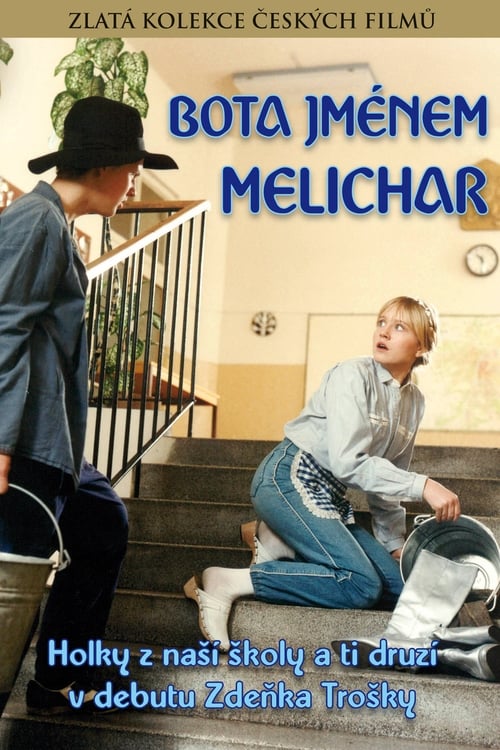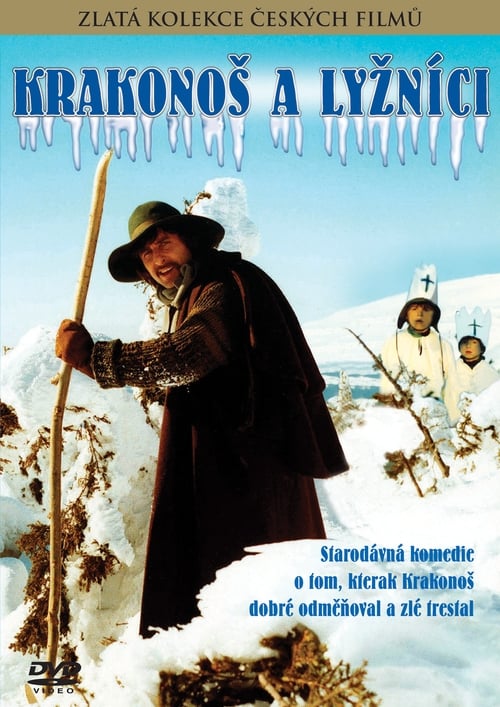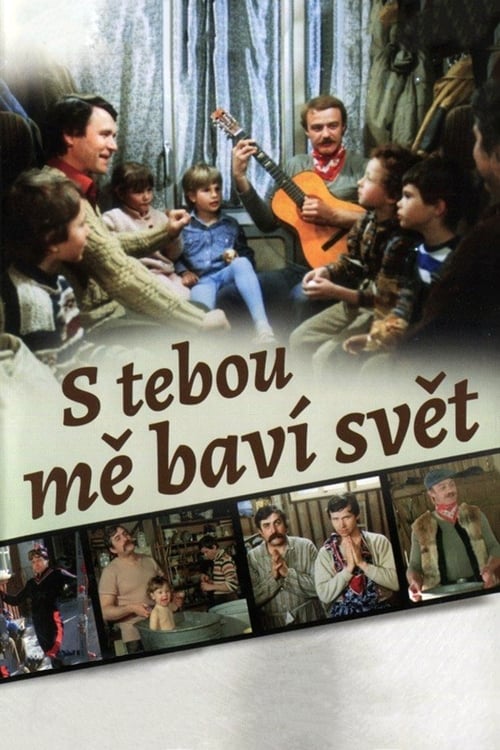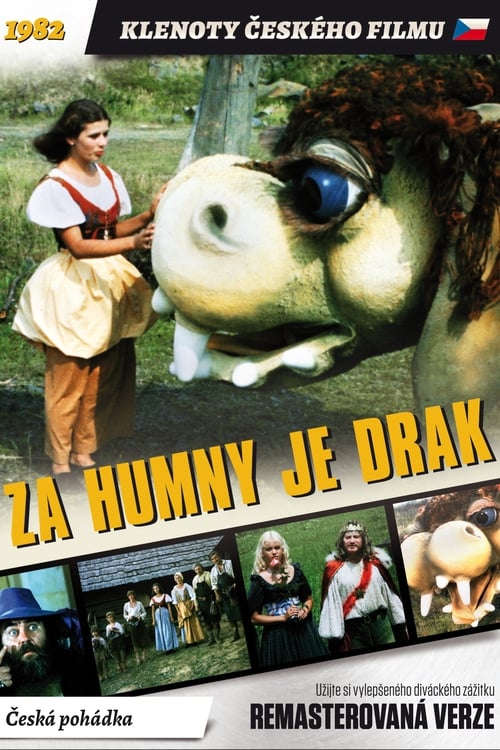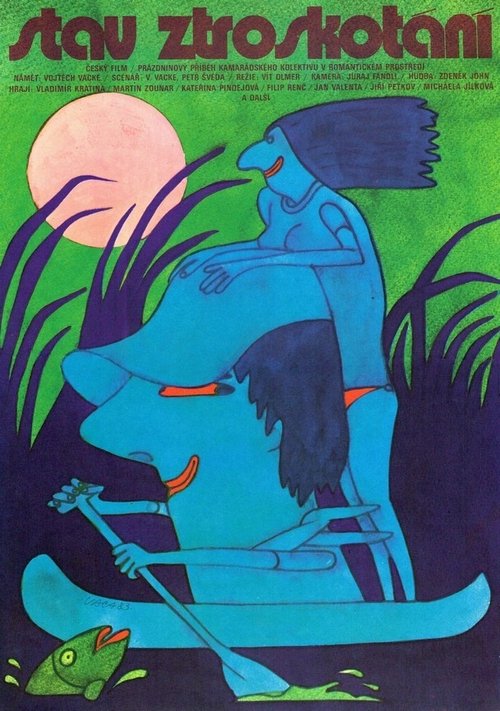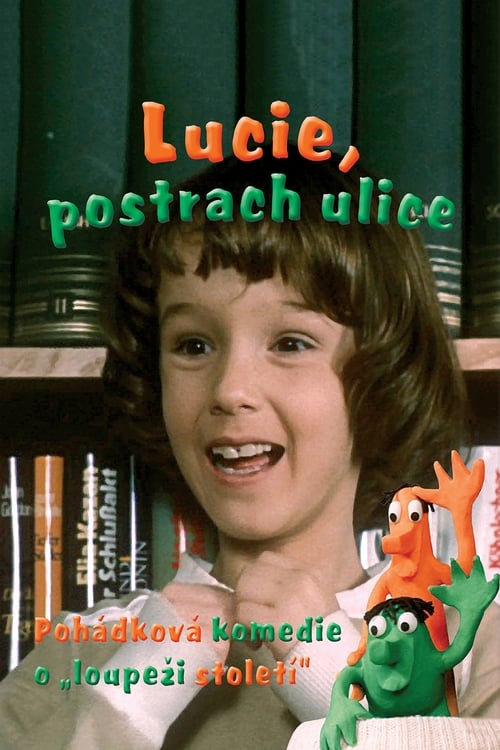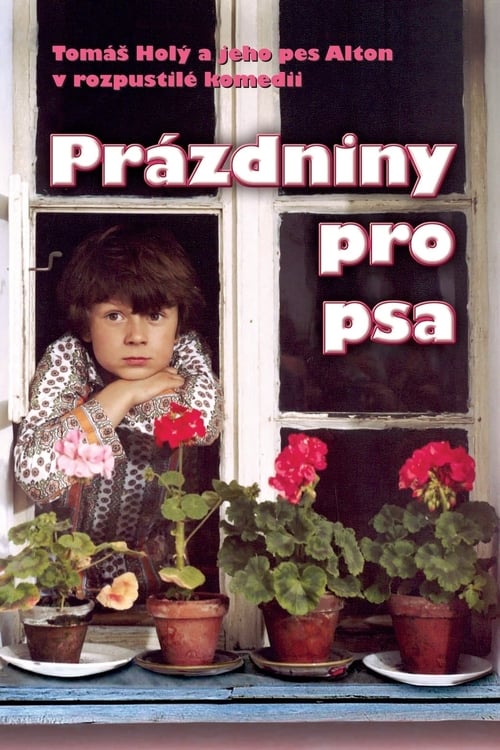
Ask Your Own Question
What is the plot?
The film opens on a bright, crisp morning shortly after the summer holidays, as a stream of children returns to their modern Czech elementary school, a campus composed of several pavilions connected by open corridors and sprawling school grounds. The air hums with the nervous excitement and whispered gossip typical of a new school year. Among the youngest is Honzík, a first-former, whose face is shadowed by disappointment. His best friend David has remained behind in kindergarten, leaving Honzík feeling abandoned and betrayed. To mask his hurt, he channels his energy into teasing a diligent schoolmate, Jana, whom he mockingly dubs "Big Nose" because of her prominent feature and her habit of reporting mischief to teachers.
Honzík's older sister, Jolanka, an eighth-grader, navigates the corridors with a quiet confidence, accompanied by her close friend Radka. Jolanka is on the cusp of adolescence, grappling with the pangs of first love and the social dynamics of teenage life. The ninth grade is dominated by the charismatic Radim Dochleba, a quick-witted, humorous boy whose clever remarks and easy charm have earned him admiration, especially from girls like Jolanka and the stylish, somewhat vain Lamková, known for her luxurious silver boots. The new ninth-grade class teacher, Ms. Adamová, is introduced as a young, inexperienced educator who struggles with uncertainty and the challenges of managing a lively group of teenagers. Her awkward but earnest attempts to command respect add a gentle, humanizing thread to the school's tapestry.
The tone is set with a scene in the cloakroom, a bustling hub where children leave their shoes and coats. A young girl bursts into tears, leaving behind a single shoe signed "Melichar," a mysterious signature that immediately captures the attention of Radim. Inspired by this oddity, Radim begins a playful ritual of "christening" the shoes of his classmates with nicknames, turning the mundane into a source of amusement. Lamková's admired silver boots earn the grand title "Candlemas," a name that hints at their dazzling appearance and the social status they confer.
As the school days pass, a subtle tension weaves through the cheerful routine. Shoes and coats begin to disappear mysteriously from the cloakroom, sparking confusion and whispers among students and teachers alike. Honzík, sharp-eyed and curious, notices an elderly woman roaming the school grounds, pushing a bag on wheels. Her presence is odd, almost out of place, and Honzík's suspicions grow. He watches her carefully as she moves through the pavilions, her bag seemingly heavier each time she passes.
Meanwhile, Jolanka secretly tries on the coveted Candlemas boots. The scene is charged with adolescent longing and rebellion, as she slips into the luxurious silver footwear, feeling a thrill of forbidden indulgence. However, she fails to return them on time, and panic sets in. When Radim catches her returning the boots, his teasing remark cuts deeper than intended, creating a rift between them. "Trying to steal the show, Jolanka?" he quips with a smirk, but she takes the comment to heart, retreating into silence.
The thefts escalate. More coats vanish, and the Candlemas boots disappear along with them. The school community buzzes with unease, yet no one can identify the culprit. Honzík, driven by a mix of fear and determination, confides in Radim about the suspicious elderly woman. Radim listens, amused but intrigued, his sharp mind piecing together the clues.
One afternoon, Honzík glimpses the woman again through a classroom window. Unable to contain himself, he bolts from the room, sprinting across the school grounds in pursuit. The tension mounts as he confronts her near the cloakroom. "Stop! What are you doing with those shoes?" he demands, his voice trembling with a mix of courage and fear.
The woman, startled, tries to flee, but Honzík is relentless. A physical struggle ensues, raw and chaotic. Just as the woman seems about to escape, Janička, the Big Nose herself, appears and helps Honzík wrestle the bag away. Their combined effort reveals the stolen shoes and coats hidden within. The thief is unmasked: an elderly woman who has been pilfering the school's footwear and outerwear, her motives unclear but her actions undeniable.
This confrontation is the story's climax, a vivid moment of youthful bravery and unexpected alliance. The school community rallies around Honzík and Janička, their friendship solidified through this shared adventure. Meanwhile, Radim and Jolanka reconcile, their earlier misunderstanding dissolved in the light of the greater mystery's resolution. Radim's wit softens, and Jolanka's guarded demeanor opens, hinting at the blossoming of trust and affection.
The film closes on a hopeful note. The shoe thief is dealt with--presumably handed over to the appropriate authorities or guardians--though the narrative leaves her fate gently ambiguous, focusing instead on the restored harmony within the school. Shoes and coats are returned, the cloakroom's order restored. The children, teachers, and parents resume their lives with a renewed sense of community and vigilance.
In the final scenes, the camera lingers on the children playing on the school grounds, their laughter echoing as the sun sets behind the pavilions. Honzík and Janička walk side by side, their friendship a testament to courage and cooperation. Jolanka and Radim share a shy smile, their youthful romance quietly kindled. Ms. Adamová, now more confident, watches over her class with a gentle smile, embodying the promise of growth and learning.
"Boot Called Melichar" ends as it began--in the everyday world of a Czech elementary school in the 1980s--but with the subtle magic of a mystery solved and friendships forged, leaving the audience with a warm, nostalgic glow.
More Movies Like This
Browse All Movies →What is the ending?
In the ending of "Boot Called Melichar," the protagonist, Melichar, confronts the challenges he has faced throughout the film. After a series of trials, he ultimately finds a sense of resolution and acceptance regarding his journey. The film concludes with Melichar embracing his identity and the relationships he has built, leading to a hopeful yet bittersweet farewell.
As the final scenes unfold, we see Melichar standing at the edge of a vast landscape, reflecting on his experiences. The sun sets in the background, casting a warm glow that symbolizes the end of one chapter and the beginning of another. His friends gather around him, each having undergone their own transformations throughout the story. They share a moment of camaraderie, acknowledging the struggles they faced together. Melichar's journey has not only been about personal growth but also about the bonds formed with those around him.
The film closes with Melichar taking a deep breath, ready to step into the future, leaving behind the burdens of his past. The screen fades to black, leaving the audience with a sense of hope and the understanding that while challenges may persist, the connections we make can guide us through.
Now, let's delve into the ending in a more detailed, chronological narrative.
As the climax of "Boot Called Melichar" approaches, Melichar finds himself at a crossroads, both literally and metaphorically. The scene opens with him standing alone on a hill, overlooking the town that has been the backdrop of his struggles. The sky is painted with hues of orange and purple as the sun begins to set, symbolizing the end of his tumultuous journey. Melichar's face reflects a mix of determination and vulnerability; he knows that the choices he makes now will define his future.
In the next scene, Melichar's friends arrive, each one carrying the weight of their own experiences. They approach him cautiously, aware of the emotional turmoil he has been through. The atmosphere is thick with unspoken words, but as they gather around him, a sense of solidarity begins to form. They share stories of their own challenges, creating a tapestry of shared experiences that bind them together. This moment is pivotal, as it highlights the theme of friendship and support that has been woven throughout the film.
As the sun dips lower, casting long shadows, Melichar takes a step forward, addressing his friends. His voice is steady, yet tinged with emotion. He expresses gratitude for their unwavering support, acknowledging that he could not have faced his demons alone. Each friend responds, sharing their admiration for Melichar's resilience and growth. This exchange is filled with heartfelt moments, laughter, and even tears, as they reflect on the journey they have taken together.
The scene shifts to a more intimate moment where Melichar stands apart from the group, looking out at the horizon. He contemplates the lessons he has learned and the person he has become. The camera captures the subtle changes in his expression, revealing a man who has come to terms with his past. He understands that while the road ahead may still be fraught with challenges, he is no longer the same person who started this journey.
In the final moments, Melichar turns back to his friends, a newfound resolve in his eyes. He invites them to join him as he takes a step forward into the unknown. The group forms a tight circle, symbolizing unity and strength. They begin to walk together, side by side, as the sun finally sets, enveloping them in twilight. The scene is filled with a sense of hope and possibility, as they venture into the future, ready to face whatever comes next.
As the credits roll, we see brief glimpses of each character's fate. Melichar is shown pursuing his dreams with renewed vigor, while his friends embark on their own paths, each carrying the lessons learned from their shared experiences. The film concludes with a lingering sense of optimism, emphasizing the importance of connection and the strength found in community.
In summary, the ending of "Boot Called Melichar" encapsulates the journey of self-discovery, the power of friendship, and the courage to embrace the future, leaving the audience with a poignant reminder of the bonds that shape our lives.
Is there a post-credit scene?
The movie "Boot Called Melichar," produced in 1983, does not feature a post-credit scene. The film concludes its narrative without any additional scenes or content after the credits roll. The story wraps up with a sense of resolution, focusing on the journey of the main character and the emotional arcs that have been developed throughout the film. The absence of a post-credit scene allows the audience to reflect on the themes and character growth presented in the story without any further distractions.
What is the significance of the boot in Melichar's journey?
The boot symbolizes Melichar's struggles and aspirations throughout the film. It represents both his physical journey and his emotional growth as he navigates the challenges of his life.
How does Melichar's relationship with his family evolve throughout the film?
Melichar's relationship with his family is strained at the beginning, marked by misunderstandings and lack of communication. As the story progresses, he learns to confront his fears and reconcile with them, leading to a deeper understanding and connection.
What challenges does Melichar face in his quest for self-discovery?
Melichar faces numerous challenges, including societal expectations, personal insecurities, and the pressure to conform. Each obstacle forces him to confront his true self and ultimately leads to significant personal growth.
Who are the key supporting characters that influence Melichar's journey?
Key supporting characters include his childhood friend who serves as a source of encouragement, a mentor figure who provides wisdom, and a romantic interest who challenges his views on love and commitment, each playing a crucial role in his development.
What pivotal moment leads to Melichar's transformation?
A pivotal moment occurs when Melichar faces a major setback that forces him to reevaluate his choices and priorities. This moment of crisis acts as a catalyst for his transformation, pushing him to embrace his true identity and aspirations.
Is this family friendly?
"Boot Called Melichar," produced in 1983, is a family-friendly film that primarily focuses on themes of adventure, friendship, and personal growth. However, there are a few scenes and aspects that might be considered potentially objectionable or upsetting for children or sensitive viewers:
-
Emotional Struggles: Characters experience moments of sadness and conflict, which may evoke feelings of distress. These scenes highlight personal challenges and the struggle to overcome obstacles.
-
Mild Peril: There are instances of danger or tension that could be unsettling for younger viewers, such as characters facing difficult situations or making risky decisions.
-
Conflict and Resolution: The film includes scenes of disagreement and conflict between characters, which may lead to emotional confrontations. While these are resolved positively, the buildup may be intense for some.
-
Themes of Loss: There are underlying themes related to loss and longing, which may resonate deeply and evoke emotional responses.
Overall, while the film is designed to be suitable for family viewing, these elements may require parental guidance for younger audiences or those who are particularly sensitive to emotional content.

